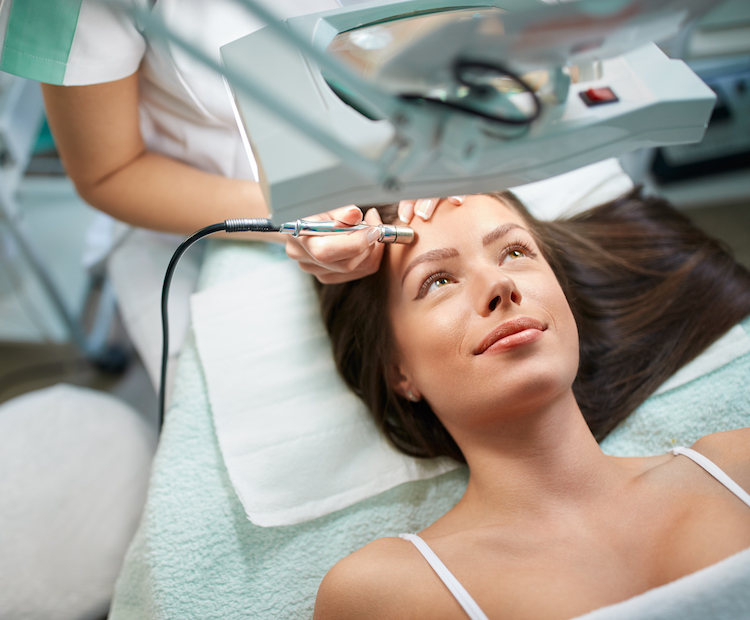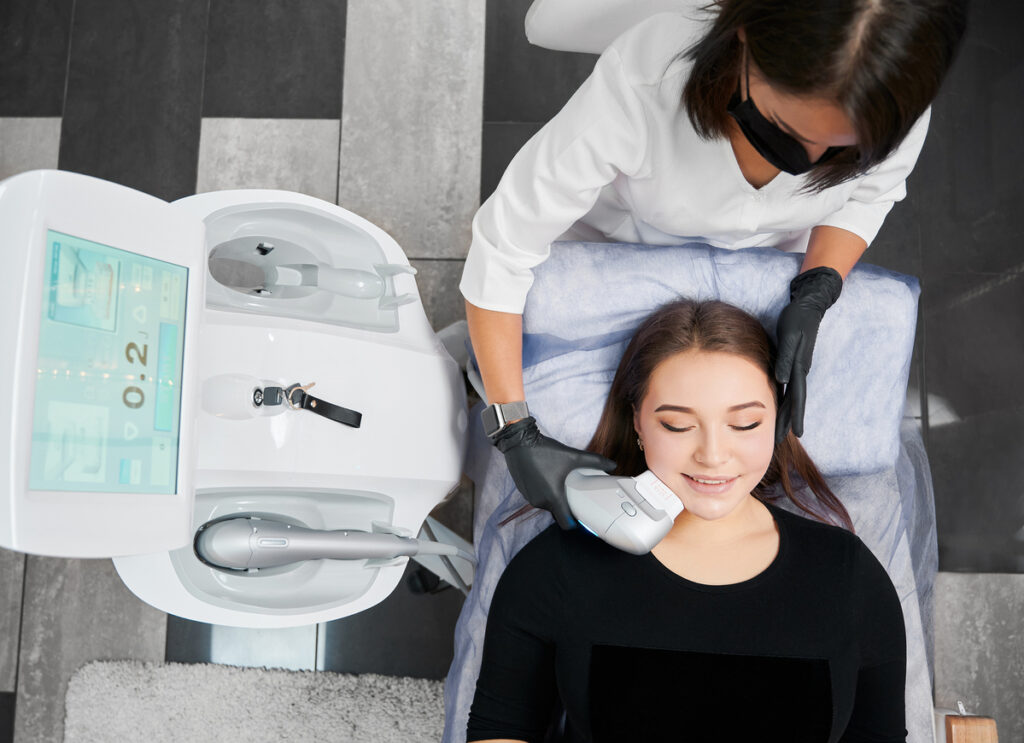Introduction
Differet types of estheticians services, often referred to as skin care specialists, are key players in the beauty industry with specialized expertise in skin care. They offer an array of services focused on improving the skin’s appearance and overall health.
Understanding their role is vital, for skin care goes beyond surface level—it plays a significant role in personal care, directly correlating with self-confidence, self-esteem, and overall wellness.
Esthetician services offer a science-based approach to skin care, focusing on the skin’s health and beauty by addressing individual skin concerns and promoting healthy skin maintenance habits.
[ruby_related heading=”More Like This” total=5 layout=1 offset=5]
The role of an esthetician may extend beyond service provision to education—guiding clients on appropriate skincare routines, nutrition for skin health, and advice on lifestyle choices that can influence the skin’s condition.
Understanding Skin Types and Concerns

A fundamental step before seeking esthetician services is understanding your skin type, which is a critical determinant for suitable treatments.
Normal Skin:
Considered the ideal type, this skin is balanced, neither excessively oily nor dry, and typically doesn’t have severe sensitivity, acne, or blemishes. It is characterized by fine pores, smooth texture, no visible blemishes or red spots, and a radiant complexion.
Oily Skin:
Oily skin is characterized by overactive sebaceous glands that produce excessive oil, leading to enlarged pores, a shiny complexion, and a greater propensity for acne and blackheads. Controlling the oil production and managing breakouts are the common concerns for this skin type.
Dry Skin:
Characterized by underactive sebaceous glands, the dry skin produces less sebum than normal skin, causing it to lack the lipids it needs to retain moisture and build a protective shield against external influences. This lack of natural oils leads to tightness, dullness, rough texture, visible lines, and increased sensitivity.
Combination Skin:
This type is a mix of both dry and oily skin, where usually the forehead, nose, and chin (the T-zone) are oily, while the rest of the face is dry or normal. Managing this skin type can be tricky, as it requires addressing two different conditions.
Sensitive Skin:
This type tends to react to certain skincare products with redness, itching, or burning. It is prone to inflammation and adverse reactions and requires special care and gentle products.
Among common skin concerns are signs of aging (wrinkles, fine lines, and loss of elasticity), acne, hyperpigmentation (dark spots), sensitivity, dehydration, and sun damage.
Esthetician Services
Facials are perhaps the most widely recognized service offered by estheticians. They involve various procedures, such as cleansing, exfoliation, extraction, massage, mask application, and moisturizing, to deep-clean and rejuvenate the skin. Facials can be tailored to different skin types and concerns.
Some of the common types of facials include anti-aging facials, acne facials, hydrafacials, and brightening facials.
An anti-aging facial often involves the use of products and techniques designed to slow the skin aging process, brighten skin, and reduce wrinkles. If you’re on the quest for younger-looking skin, you might consider this.
Acne facials focus on extractions for blocked pores to reduce the look of acne. The bonus of this type of facial is that it should involve a consultation with the esthetician to go over methods of caring for the skin once you have left the spa.
Hydrating facials are designed to hydrate and heal the skin on a deep level. They soothe dry, dehydrated skin by infusing it with intense moisture. The result is a smoother, healthier complexion.
Brightening facials are intended to improve the appearance of pigmented skin, targeting dark spots and uneven skin tone.
Chemical Peels are another popular service provided by estheticians. This treatment involves applying a chemical solution to the skin, causing the outer layers, which may be damaged or aged, to peel away.
The skin that grows back after a chemical peel is typically smoother, less wrinkled, and more evenly colored. There are different types of peels, ranging from mild to deep, that can address various skin issues like fine lines, wrinkles, sun damage, acne, and hyperpigmentation.
Mild peels, like alpha-hydroxy-acid (AHA) or beta-hydroxy-acid (BHA) peels, only remove the outer layer of skin, or the epidermis, to gently exfoliate the skin. Medium peels, often made with trichloroacetic acid (TCA), penetrate deeper to remove skin cells from both the epidermis and the upper part of the middle layer of skin, or the dermis.
Deep peels, such as phenol peels, penetrate deeply into the dermis and are used to treat severe wrinkles, long-term sun damage, deeper scars, or precancerous skin lesions.
Microdermabrasion is a non-invasive procedure that exfoliates and removes the superficial layer of dry, dead skin cells. Microdermabrasion helps stimulate new cell growth and collagen production, enhancing the skin’s tone and texture. The result is vibrant, healthy, glowing skin.
Dermaplaning is a physical exfoliation procedure that requires the use of a sterile surgical scalpel to gently “shave” the skin’s surface, removing the top-most layer of dead skin along with fine vellus hair (aka peach fuzz). It leaves the skin brighter, smoother, glowing, and more youthful.
LED Light Therapy is a painless, non-invasive skincare treatment that uses varying wavelengths of light, including red and blue, to treat acne, reduce inflammation, and promote anti-aging effects. led light is used for anti-aging treatments because it helps stimulate collagen production, while blue light is used for treating acne.
Waxing is a common method of semi-permanent hair removal that removes hair from the root. Almost any area of the body can be waxed, including eyebrows, face, pubic hair (called bikini waxing), legs, arms, back, abdomen, and feet. Waxing can leave the skin hair-free from three to six weeks, but the results vary from person to person.
Lash and Brow Services include treatments like eyebrow threading and tinting, eyelash extensions, and lash lifts, aimed at enhancing the appearance of the eyelashes and eyebrows.
Eyebrow threading is an ancient hair removal technique, practiced for centuries among the most beautiful women of Asia and the Middle East. Eyelash extensions involve applying extensions made of synthetic fibers individually to your natural lashes to make them longer and fuller.
Lash lifts, on the other hand, are a semi-permanent treatment that curls your natural lashes upwards, making them look longer and fuller.
How to Choose the Right Esthetician Service

Choosing the right esthetician service involves considering your skin type and concerns. Understanding your skin’s specific needs will help you decide which services will be most beneficial.
For example, if you have dry skin, a hydrating facial or microdermabrasion could be particularly beneficial. If you’re dealing with acne, a facial that includes extractions and a calming mask may be the best choice.
However, understanding your skin type and concerns isn’t the only factor to consider. It’s also crucial to understand the procedure itself, its benefits, potential side effects, and aftercare.
For instance, some treatments, such as chemical peels or waxing, may require downtime or specific aftercare procedures.
Consulting with a licensed esthetician is an essential step when choosing the right service. A professional esthetician will assess your skin, discuss your concerns, and recommend the most suitable treatments based on their expertise and your specific needs. They will also guide you on what to expect during and after the procedure, helping you make an informed decision.
Conclusion
Different types of esthetician services offer a wide range of treatments designed to cater to various skin concerns. From facials and chemical peels to microdermabrasion, dermaplaning, waxing, and lash and brow services, these treatments can significantly enhance the health and appearance of your skin.
Remember that skincare is not just about enhancing your physical appearance—it’s an integral part of personal care, promoting self-confidence, wellness, and overall quality of life.
It’s therefore vital to consult with a licensed esthetician who can provide professional advice and guide you in choosing the right skin care services based on your unique needs.
Through ongoing treatments and a routine that supports your skin’s health, you can maintain your skin at its best, improving not only its appearance but also its function as a barrier against environmental stressors.
Healthy skin is happy skin—and a happy you. Invest in your skin—it’s going to represent you for a long time.

